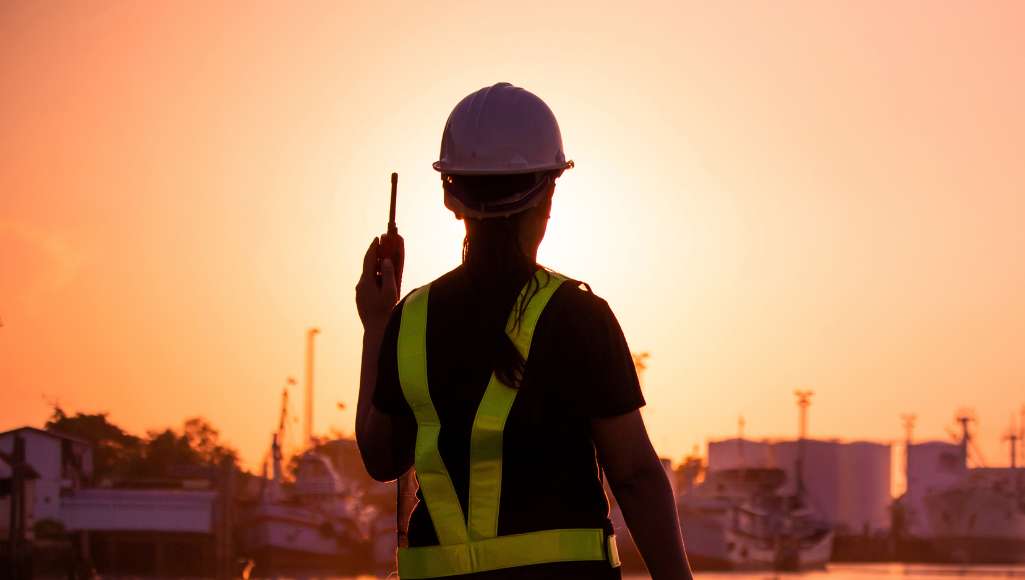
Addressing Sexual Assault and Sexual Harrassment at Sea
Seafaring has long been a male-dominated industry, where tough men perform tough work. But while fair labor laws now allow women to pursue the same maritime careers as men, the reality is that female seafarers face Sexual Assault and Sexual Harassment (SASH) as much or more than their counterparts at shore.
When working in small numbers for months at sea in an isolated environment, many women are subject to SASH incidents. In this article, we’re going to explore this problem, its causes and potential solutions.
The SASH Challenges in Maritime
A survey by WISTA International, Anglo Eastern and several other industry organizations found shocking rates of gender-based discrimination, onboard harassment and bullying against women.
Among women seafarers who responded, 60% reported gender-based discrimination and 66% agreed that male employees harassed and intimidated female coworkers. Among respondents from the shipping and industrial sectors, 25% said they commonly experience physical and sexual harassment, as well as intrusions on their privacy.
Understanding the Underlying Causes
One root cause of sexual assault and sexual harassment at sea is an imbalance between male and female workers. Women represent just 1.2% percent of the global seafarer workforce, according to the BIMCO/ICS 2021 Seafarer Workforce Report. Fewer than 1 in 10 of these women hold deck officer or engineering roles. This is significant because a woman’s role on a ship correlates directly with her chances of experiencing SASH.
In a 2014 survey of female seafarers mainly in supervisory roles, just 17% said sexual harassment is an issue. However, in a pilot survey of female seafarers in mostly junior roles, nearly 50% said they experienced onboard sexual harassment. We can conclude from this that women in positions of power are less likely to experience SASH incidents, while those in entry-level roles are significantly more vulnerable to abuse and exploitation.
Another cause has been lax enforcement of policies. The maritime industry has yet to develop a culture of zero-tolerance when it comes to sexual harassment and assault. According to the WISTA survey, just 7% of women who reported incidents to superior officers were satisfied with the outcome. Having policies in place is meaningless without adequate enforcement.
Further, seafaring is an insular culture where many workers are hesitant to report any issues, let alone something as serious as sexual assault and sexual harassment. Women may rightly fear reputational damage, reprisals and social ostracization as a result of speaking up.
How Can We Change Onboard Culture?
At its core, sexual assault and harrassment is driven by power imbalance. Giving female seafarers more power will go a long way to making them less vulnerable. One solution is to strategically increase the number of female seafarers by recruiting more women for onboard officer roles. This would help protect the interests of entry-level females and hopefully make seafaring a more attractive career prospect.
The goal of bringing more women into commanding roles is two-fold: Reduce the likelihood of SASH at sea while improving the chances that an incident will be safely reported, taken seriously and met with consequences.
However, we must also address the broader issue of respecting women seafarers the same as men. An All Aboard Alliance report titled “15 Key Pain Points for Women at Sea” found that many women feel they have to outperform male colleagues just to be seen as competent. They also reported unequal access to training and opportunities, feelings of social isolation, poor support for family planning and maternity leave, and an onboard life that simply doesn’t feel designed for them, from a private place to change to equipment that fits their bodies.
Reforming from a Policy Perspective
In the U.S., the Ship Operations Cooperative Program (SOCP) developed SOCP Sexual Assault and Sexual Harassment Prevention tools for the prevention of sexual assault and sexual harassment. These include computer-based training modules, best practice handbooks and prevention toolkits designed to educate everyone – potential victims, perpetrators and responding superiors alike.
Similarly, the United States Merchant Marine Academy (USMMA) requires all U.S.-flag commercial operators to follow their Every Mariner Builds a Respectful Culture (EMBARC) Standards. These policies and procedures are designed to build a culture of SASH-prevention and support appropriate responses to incidents of misconduct.
From a global perspective, the International Maritime Organization’s Standards of Training, Certification and Watchkeeping for Seafarers (STCW) now includes mandatory training on bullying and harassment in the maritime sector, including SASH. All seafarers working in international waters must hold STCW endorsements.
Among other things, the training educates seafarers on how to spot SASH and respond to it responsibly. Those who experience or witness SASH may suffer from depression, poor performance and unhealthy coping, and they’re likely to make errors, posing significant risks to the safe operation of maritime vessels.
However, policies are toothless without enforcement. There need to be consequences not just for SASH, but for superiors who fail to respond adequately to valid complaints.
Conclusion: The Maritime Industry Needs Women
The maritime industry is already suffering from a labor shortage and the lack of skilled workers is one of the biggest threats to our industry. We should all be concerned for our professional survival if maritime companies cannot make women feel safe and welcome, as they are essential to the future of this industry.
Cultural change is possible. Behavioral change is possible. We aren’t obligated to simply accept the prevalence of sexual assault and sexual harassment as one of the costs of doing business at sea. Sexual misconduct has no place in any workplace – especially onboard, where the success of a crew depends on trust, respect and cooperation.
Let’s do better by working to make maritime an industry that workers compete to join because they know they’ll be safe, cared for and given the chance to thrive.


